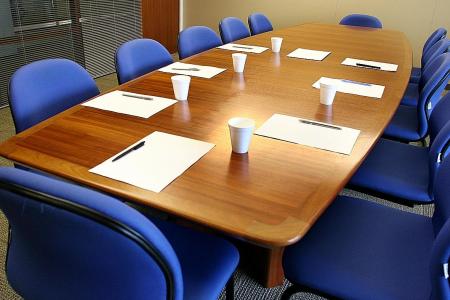How to chair productive meetings
Everyone has attended bad meetings at work. This includes struggling to stay awake during a three-hour session, being forced to be at an irrelevant gathering or listening to topics explained in a muddled, haphazard manner.
Time is one of our most valuable assets and unproductive meetings are a waste of everyone's time.
This is why when I chair a meeting, I go through these steps:
DECIDE ON THE PURPOSE
Is the meeting to communicate an important message? Do you need to get consensus? Are discussions or updates required?
Once you understand the purpose of the meeting, it becomes clear who should attend, and you can invite only the relevant people.
A meeting should be held more for the benefit of the participants than the person chairing it. If an individual will not benefit from the meeting, do not invite them.
If the chair requires information from the absent person to update other participants, a one-to-one chat or phone call should suffice.
SET OUT AN AGENDA
A few days before the meeting, I send a reminder to all attendees with the agenda that covers the purpose of the meeting.
This should be sent early enough for those attending to prepare themselves if updates are required, as well as to check whether additional agenda items should be added.
While I never follow a meeting agenda rigidly, having a plan helps avoid any unexpected surprises.
Be willing to have casual, spontaneous meetings with no formal agenda. These are triggered by a problem or opportunity. They get to the heart of the matter quickly.
BE AWARE OF TIME
Time management is an important part of keeping meetings productive. Any meeting that runs longer than 40 minutes loses some of the attention of those present. A meeting that extends beyond an hour is a waste of time.
When sending out the agenda, say when you expect the meeting to end. This allows attendees to set aside the right amount of time, encourages them to keep discussions succinct and stay on topic.
One of the easiest ways to keeping meetings short is to remove all the chairs from the meeting room. Standing meetings typically last no longer than 40 minutes.
DEMONSTRATE CREATIVE THINKING
When the chair demonstrates creative thinking, others follow.
For example, when brainstorming new ideas, I ask for only positive contributions.
No "bad idea" is to be shot down or criticised. If someone says something patently silly, no reprimands are allowed.
This makes brainstorming fun and sometimes wild thoughts turn into a practical action or product.
I also encourage contributions from quieter participants. This should be done gently not punitively.
For example, ask an intelligent, searching question, instead of putting them on the spot by demanding, "What's your view, Fred?"
Engaging the reluctant is a key skill for anyone who runs meetings.
DISCUSSING DISASTERS
Sometimes the objective of the meeting is to discuss a disaster.
Turn the downside of what happened into a useful lesson for all who may have made the same mistake or been affected by the consequences. Get the person responsible to explain so everyone understands how to avoid it in the future.
Meetings that have competitive, adversarial views can still be fruitful. However, the best meetings are collegial, and the secret to making them so is good planning.
The writer is the founder mentor of Terrific Mentors International, an organisation that provides mentoring, coaching and training.
Get The New Paper on your phone with the free TNP app. Download from the Apple App Store or Google Play Store now



